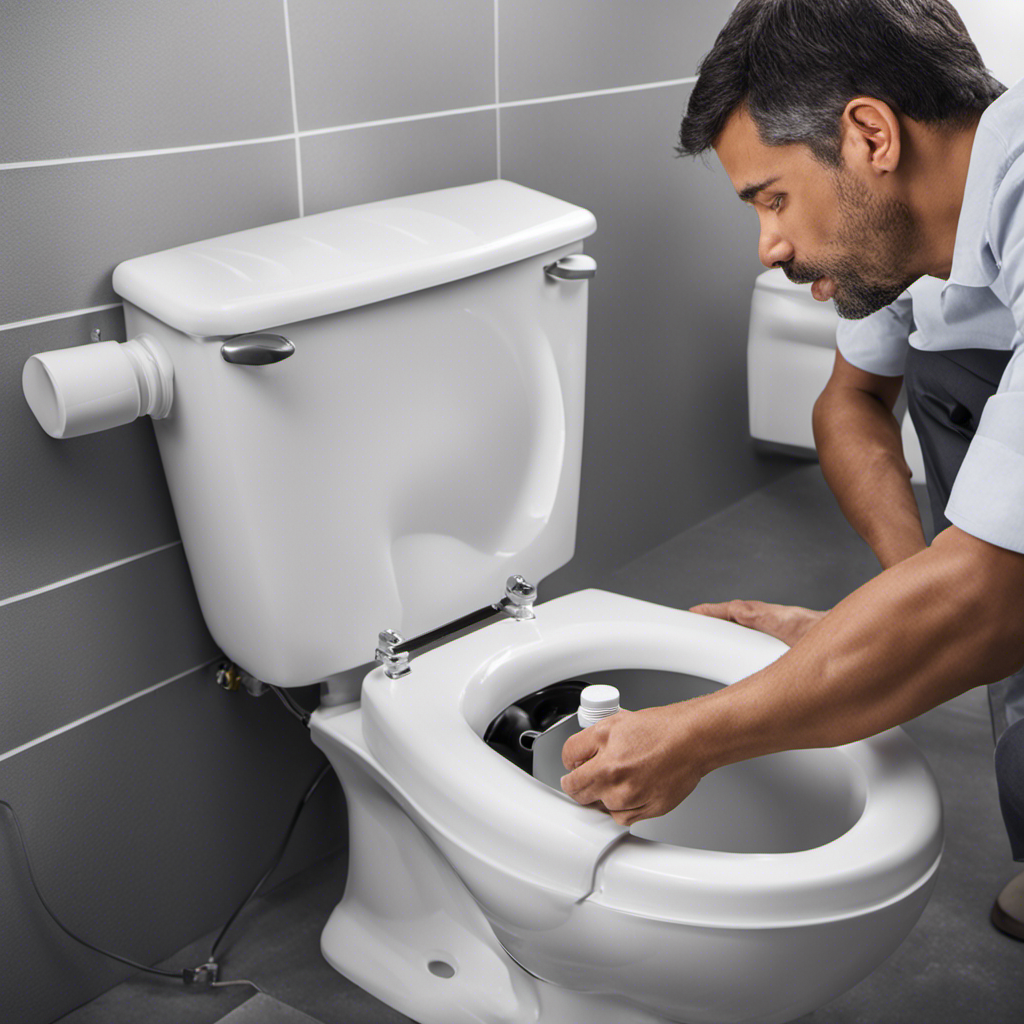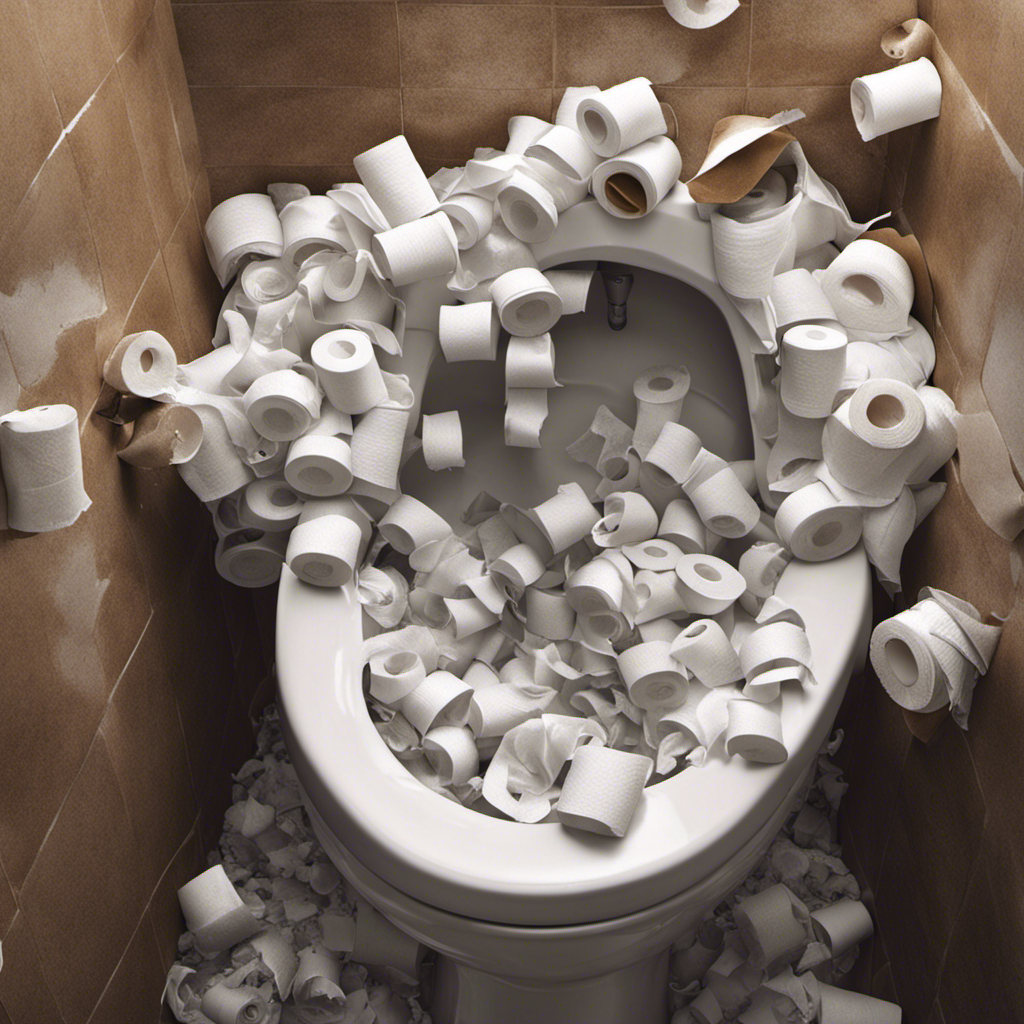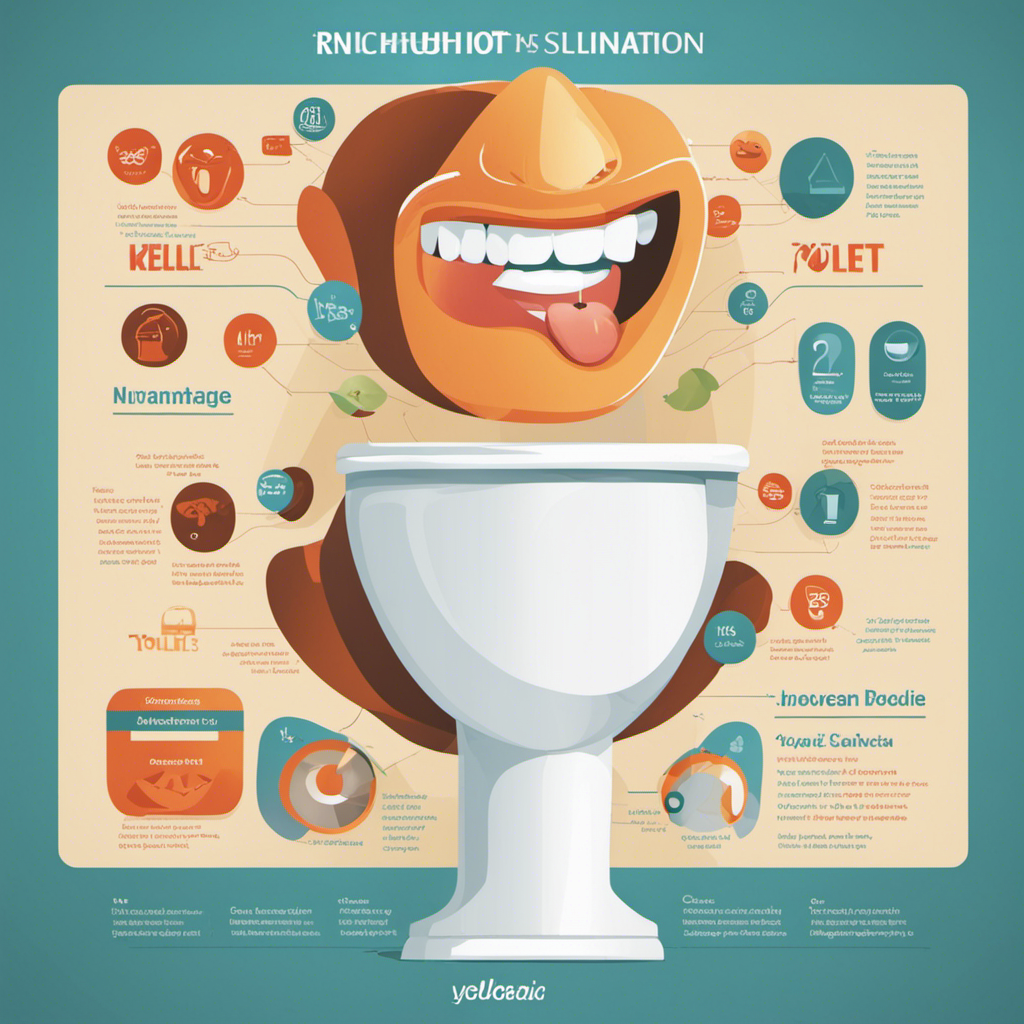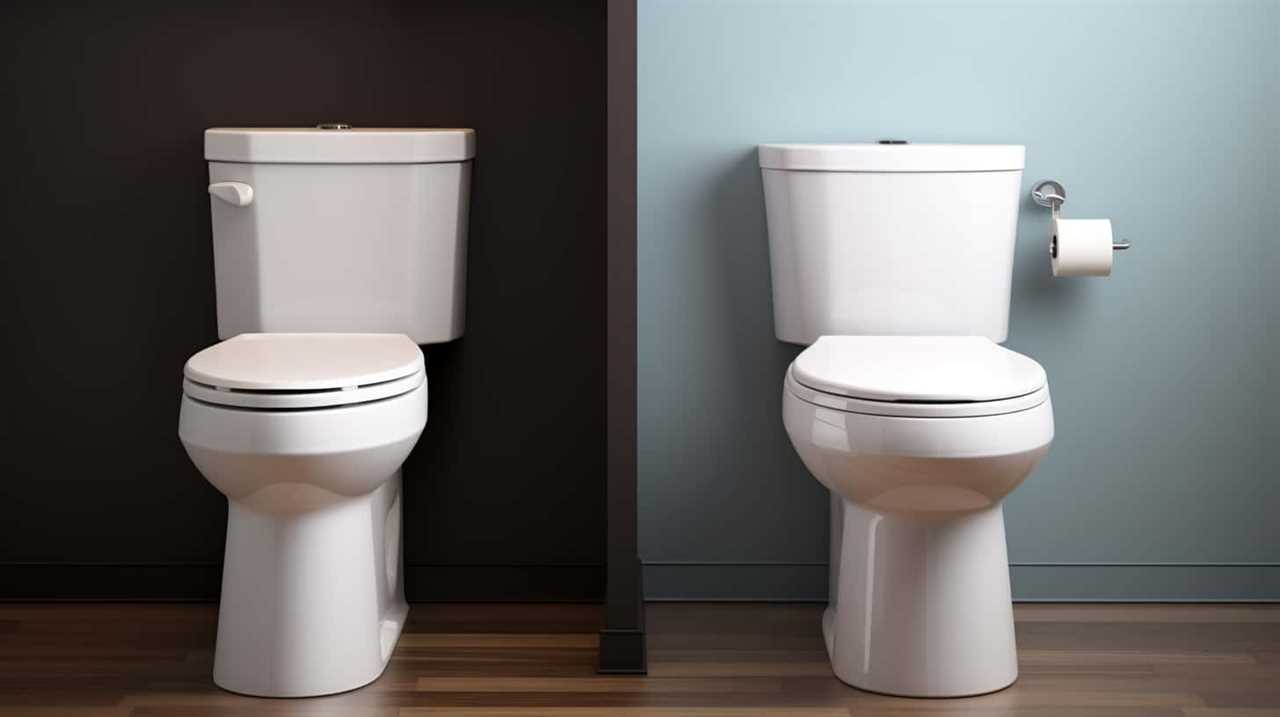Have you ever wondered how much money goes down the drain every time we flush the toilet? In this article, we will delve into the cost of water per flush and the factors that influence it.
By analyzing the average number of flushes per day, we will also calculate the monthly and yearly cost of flushing.
Additionally, we will provide practical tips to help you reduce water consumption and save money.
Get ready to master the economics of flushing!

Key Takeaways
- The average toilet flush consumes about 1.6 gallons of water.
- Implementing water-saving devices like low-flow toilets and dual-flush toilets can lead to substantial savings.
- Conserving water and reducing unnecessary flushes helps preserve our planet’s resources.
- The cost of each toilet flush is influenced by the implementation of water conservation measures and the impact on the environment.
The Cost of Water per Flush
When calculating the overall cost of using the toilet, it’s essential to consider the expense incurred with each flush due to the consumption of water.
Water conservation is a crucial aspect to consider as it not only helps in reducing water bills but also has a significant impact on the environment.
The average toilet flush consumes about 1.6 gallons of water, which may seem insignificant, but when you consider the number of times a toilet is flushed in a day, it adds up quickly.
By conserving water and reducing the number of unnecessary flushes, we can contribute to preserving our planet’s resources.

Implementing water-saving devices such as low-flow toilets or dual-flush toilets can greatly reduce the amount of water consumed per flush, leading to substantial savings and a positive impact on the environment.
Factors That Influence the Cost
To determine the cost of each toilet flush, several factors influence the overall expense.
One of these factors is the implementation of water conservation techniques. By using low-flow toilets or installing water-saving devices, such as dual flush systems or adjustable flapper valves, individuals can reduce the amount of water used per flush. This, in turn, decreases the cost associated with each flush.
Another factor to consider is the impact of flushing on the environment. Traditional toilets can consume large amounts of water, contributing to water scarcity and putting a strain on the ecosystem. By adopting more efficient flushing methods, we can minimize our water footprint and help preserve this valuable resource.

Therefore, considering these factors is crucial when assessing the cost of each toilet flush.
Average Number of Flushes per Day
We typically flush the toilet multiple times a day, contributing to the overall cost of each flush. Understanding the average number of flushes per day is crucial in assessing the environmental impact and the need for water conservation measures. To shed light on this matter, let’s take a look at the table below:
| Residential Area | Average Number of Flushes per Day |
|---|---|
| Single Family | 4-6 |
| Apartment | 3-5 |
| Office Building | 2-4 |
| Public Restroom | 6-10 |
As we can see, the average number of flushes varies depending on the type of location. These figures emphasize the significance of implementing water conservation measures. By reducing the number of unnecessary flushes, we can minimize the environmental impact and lower the overall cost of flushing. Transitioning into the subsequent section, let’s now explore the monthly and yearly cost of flushing.
Monthly and Yearly Cost of Flushing
The total cost of flushing the toilet each month and year can vary depending on factors such as water rates and the average number of flushes per day. To accurately estimate the monthly and yearly cost of flushing, it’s important to consider the environmental impact of excessive flushing and the comparison of water usage between different toilet models.

- Environmental impact of excessive flushing: Excessive flushing can lead to unnecessary water wastage, which has significant environmental consequences, including water scarcity and increased energy consumption for water treatment.
- Comparison of water usage between different toilet models: Different toilet models have varying water usage rates. Older toilets typically use more water per flush compared to newer, high-efficiency toilets that are designed to conserve water.
Considering these factors, it’s crucial to optimize our flushing habits and adopt water-saving practices. By implementing tips to reduce water consumption, we can save both money and resources.
Tips to Reduce Water Consumption
Reducing water consumption can be achieved by implementing simple practices that help conserve resources and save money. There are several water-saving techniques that can be applied in the bathroom to reduce water usage.
One effective method is to install eco-friendly bathroom fixtures such as low-flow toilets and faucets. These fixtures are designed to use less water without compromising functionality. Additionally, using a dual-flush toilet allows for different flushing options depending on the waste being disposed of.
Another tip is to fix any leaks in the bathroom, as even a small leak can waste a significant amount of water over time.
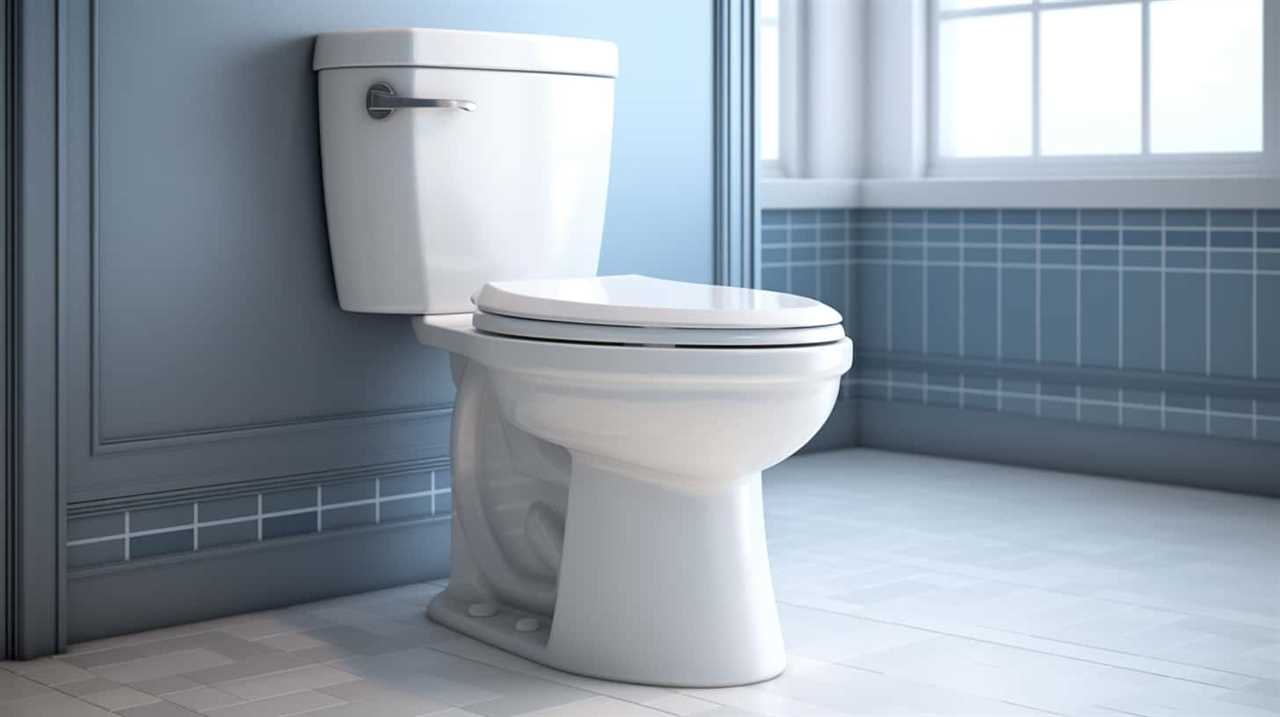
Lastly, taking shorter showers and turning off the tap while brushing your teeth can also contribute to water conservation efforts.
Frequently Asked Questions
How Does the Cost of Water per Flush Compare to Other Household Expenses?
Comparing water costs to other household expenses helps us analyze the impact of water usage on our monthly bills. It is essential to understand the financial implications of flushing the toilet regularly and manage water usage efficiently.
Are There Any Government Regulations or Incentives in Place to Encourage Water Conservation?
There are government incentives and water conservation regulations in place to promote efficient use of water. These measures aim to encourage individuals and businesses to adopt practices that reduce water consumption and preserve this valuable resource.
What Are Some Potential Long-Term Financial Benefits of Reducing Water Consumption?
Reducing water consumption can lead to potential financial savings in the long term. By conserving water, we can lower our utility bills and reduce the strain on water resources, thereby minimizing the environmental impact.
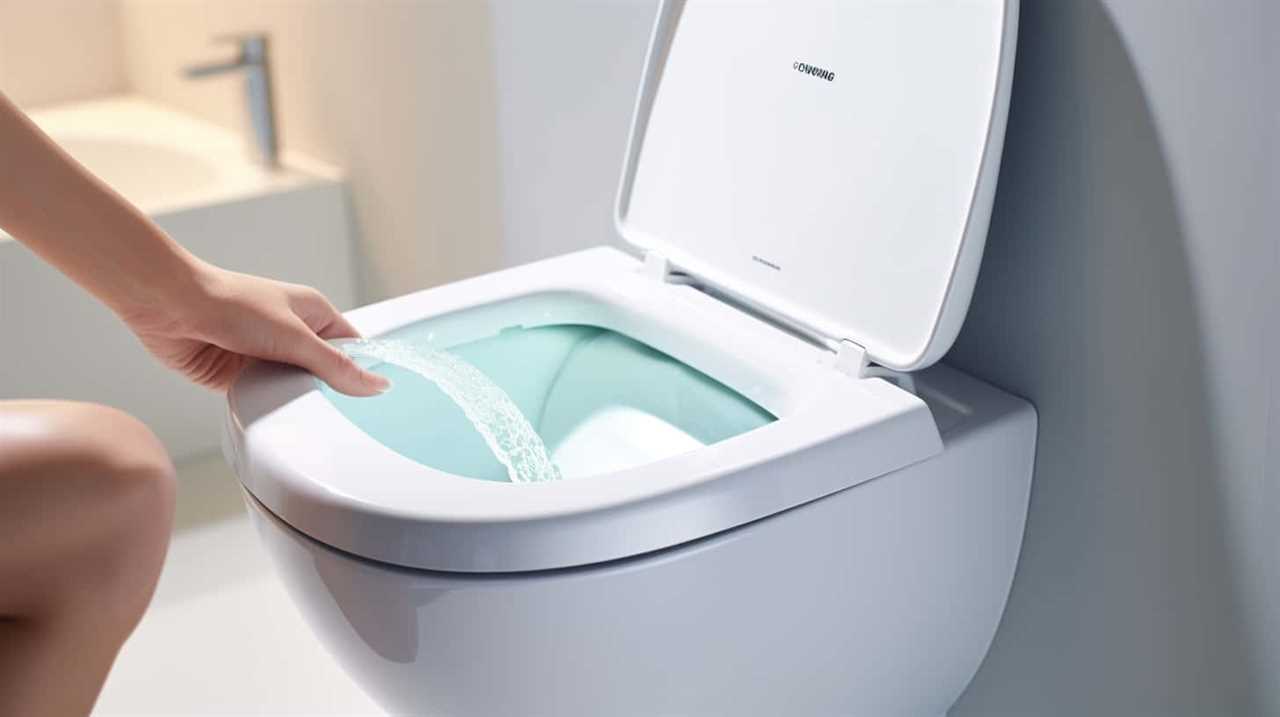
Are There Any Alternative Methods or Technologies Available to Reduce Water Usage in Toilets?
There are numerous water-saving toilet technologies and water-efficient plumbing fixtures available. These innovations can significantly reduce water usage in toilets, leading to substantial savings in both water consumption and associated costs.
How Does the Cost of Water per Flush Vary in Different Regions or Countries?
The cost of water per flush can vary significantly across different regions or countries. This variation is influenced by factors such as water scarcity, infrastructure costs, and government policies promoting water conservation.
Conclusion
Overall, the cost of flushing the toilet can add up over time. With an average of 4-6 flushes per person per day, the monthly and yearly expenses can become significant.
However, by implementing simple water-saving techniques, such as fixing leaks and using low-flow toilets, we can reduce water consumption and save money.

Just like a dripping faucet slowly drains your wallet, every flush contributes to your water bill.
So, let’s make conscious choices to conserve water and protect our pockets.

